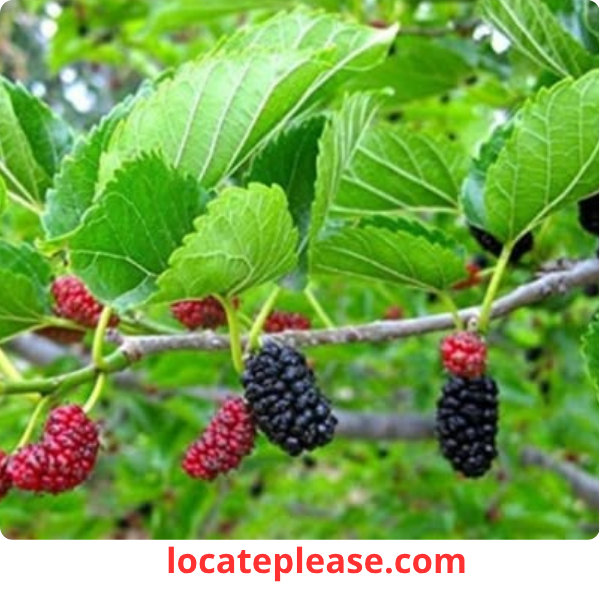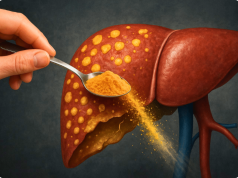You’ve likely walked past it a hundred times — a quiet tree with heart-shaped leaves, bearing clusters of white-to-pinkish berries that stain sidewalks in the summer. It’s the white mulberry (Morus alba) , a common sight in parks, backyards, and urban landscapes across North America. Most people see it as just another shade tree — or worse, a messy one. But this unassuming plant is quietly one of the most medicinally powerful species in nature .
Long revered in Traditional Chinese Medicine (TCM) , modern science is now confirming what healers have known for centuries: white mulberry — especially its leaves and berries — holds remarkable potential in managing diabetes, high blood pressure, heart disease , and even cancer .
Let’s uncover the hidden healing power of this overlooked tree.
A Plant with Deep Roots in History
The white mulberry didn’t originate in the U.S., but it’s been here since colonial times , introduced in a bold attempt to launch a domestic silk industry . Silkworms feed exclusively on mulberry leaves — but the American silk dream fizzled out.
Yet the trees didn’t. They adapted to a wide range of climates and are now naturalized across much of North America , often growing wild along roadsides and in vacant lots.
Beyond silk, the tree’s strong, flexible wood has been used for centuries in making boats, furniture, and even martial arts weapons. But its true legacy may lie not in industry — but in medicine .
Key Health Benefits of White Mulberry
1. Helps Stabilize Blood Sugar (A Natural Aid for Diabetes)
One of the most well-researched benefits of white mulberry is its ability to regulate blood glucose levels — making it a promising natural support for type 2 diabetes and prediabetes .
The secret lies in a unique compound found in the leaves:
🔬 1-Deoxynojirimycin (DNJ)
DNJ works by inhibiting alpha-glucosidase , an enzyme in the small intestine that breaks down complex carbohydrates into simple sugars. By slowing this process, glucose is released gradually into the bloodstream , preventing sharp spikes after meals.
✅ Clinical Evidence:
A 2017 study published in Phytotherapy Research found that participants with type 2 diabetes who took white mulberry leaf extract for four weeks experienced significant reductions in fasting blood sugar and HbA1c levels .
2. Supports Cardiovascular Wellness
Heart health is another area where white mulberry shines.
Its leaves and berries are rich in antioxidants like polyphenols and flavonoids , which help:
- Lower LDL (“bad”) cholesterol
- Reduce triglyceride levels
- Improve blood circulation
- Prevent oxidative stress in blood vessels
These effects contribute to lower blood pressure and reduced risk of atherosclerosis, stroke, and heart attack .
3. Shows Potential Anti-Cancer Effects
While research is still in early stages, multiple lab and animal studies suggest white mulberry may have anti-tumor properties .
Compounds like resveratrol, oxyresveratrol, and morusin have demonstrated the ability to:
- Inhibit the growth of cancer cells (including breast, liver, and colon)
- Trigger apoptosis (programmed cell death) in abnormal cells
- Reduce inflammation , a key driver of cancer development
One 2020 study in BMC Complementary Medicine and Therapies found that mulberry leaf extract suppressed tumor growth in mice with colon cancer — paving the way for future human trials.
4. Aids Digestion
White mulberry is rich in dietary fiber and pectin , both of which support a healthy gut microbiome. Fiber helps:
- Regulate bowel movements
- Feed beneficial gut bacteria
- Prevent constipation
The fruit also has mild laxative properties, traditionally used to relieve occasional digestive discomfort.
5. Eases Respiratory Symptoms and Joint Pain
In traditional medicine, white mulberry leaf tea has long been used to treat:
- Coughs and sore throats
- Fever and colds
- Bronchitis and asthma
Its anti-inflammatory effects also make it useful for arthritis and joint pain . Compounds in the plant help reduce swelling and stiffness, improving mobility.
6. Supports Skin and Hair Health
Thanks to its high levels of vitamin C, carotene, and antioxidants , white mulberry benefits the skin and hair:
- Fights free radicals that cause aging
- Brightens skin tone — mulberry extract is used in skincare to reduce dark spots
- Strengthens hair follicles and may slow premature graying
In fact, mulberry root extract is a common ingredient in natural hair dyes and anti-graying treatments.
Nutritional Highlights of White Mulberry
Whether you’re eating the sweet berries or drinking tea from the leaves, here’s what you’re getting:
|
Vitamin C
|
Immune support, collagen production
|
|
B Vitamins
|
Energy metabolism, brain health
|
|
Fiber & Pectin
|
Digestive health, cholesterol control
|
|
Polyphenols & Flavonoids
|
Antioxidant, anti-inflammatory
|
|
Resveratrol
|
Anti-aging, heart and brain protection
|
|
Carotene
|
Skin health, vision support
|
|
Organic Acids
|
Metabolism boost, detox support
|
What Do Studies Say?
Modern research continues to validate traditional uses:
- A 2021 meta-analysis in Complementary Therapies in Clinical Practice concluded that mulberry leaf supplementation significantly improved glycemic control in diabetic patients.
- Another study in The Journal of Ethnopharmacology found that mulberry fruit extract lowered systolic blood pressure in hypertensive rats.
- In vitro studies show strong antioxidant activity — even stronger than blueberries in some comparisons.
While more large-scale human trials are needed, the evidence so far is highly promising .
How to Use White Mulberry
You don’t need a lab to benefit from this plant. Here are easy ways to incorporate it:
- Mulberry Leaf Tea: Steep dried leaves in hot water for 5–10 minutes. Great before or after meals for blood sugar support.
- Fresh or Dried Berries: Eat as a snack, add to yogurt, or use in smoothies.
- Supplements: Capsules or extracts of leaf or fruit are available in health stores.
- Topical Skincare: Look for creams or serums with mulberry extract for brightening effects.
⚠️ Note: If you’re on diabetes medication, consult your doctor before using mulberry — it can enhance insulin effects and lead to low blood sugar.
A Healing Tree Hiding in Plain Sight
The next time you pass a white mulberry tree, take a second look. That “ordinary” plant may be one of nature’s most powerful healers — quietly offering solutions for diabetes, heart disease, cancer prevention, and overall wellness .
It’s not a miracle cure, but it’s a remarkable example of how nature provides — if we’re willing to pay attention.
So the next time you see those sweet, juicy berries or shade-giving leaves, remember:
This isn’t just a tree.
It’s a living pharmacy .
🌿 And it’s been here all along.










